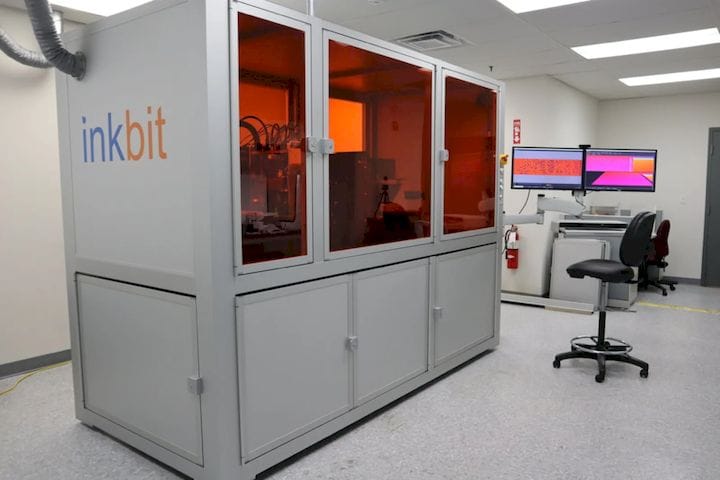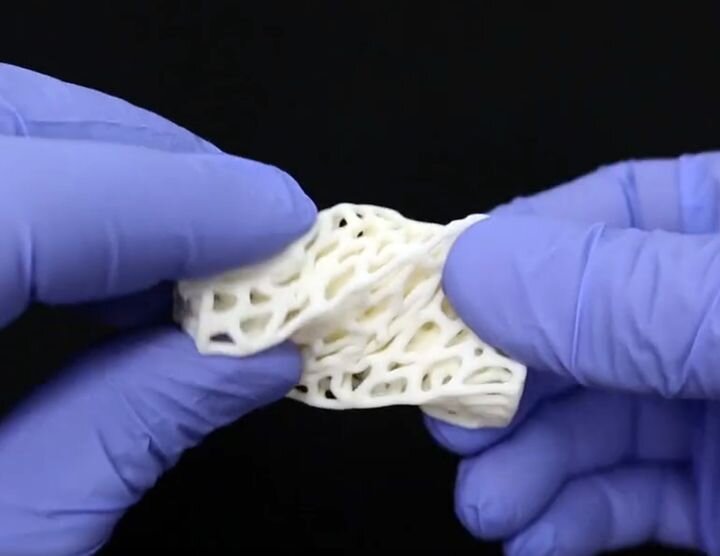
In some ways, true multi-material 3D printing has been the dream of the additive manufacturing (AM) industry for some time.
While there exists Stratasys’s impressive PolyJet process, which is capable of delivering a wide variety of textures and colors of uv-curable plastics, the ability to introduce metals and electronic components into 3D-printed parts is just over the horizon.
We may now be approaching that horizon, thanks in part to an MIT spin-out called Inkbit. Not only is Inkbit’s AM platform capable of delivering multi-material 3D printing, but it also brings a new level of machine intelligence, including closed feedback quality control, to the AM process. To learn more about the technology, we spoke to Davide Marini, CEO of Inkbit, as well as other members of the company’s team.
Adding Eyes and Brains to 3D Printing
Founded in 2017, Inkbit is the result of research conducted by Javier Ramos and other MIT graduate students who were working under Wojciech Matusik at the Computer Science and Artificial Intelligence Laboratory (CSAIL). Because Marini had run another MIT startup that was successfully acquired, the team brought him on board to lead the company, with Matusik acting as chief technology officer and Ramos as director of hardware.
All three joined engineering.com to explain the myriad ways that Inkbit’s technology advances the state of the art of AM. The base 3D printing process for the firm’s technology is a form of material jetting, which deposits photopolymer resin from an inkjet printhead and then cures it. A key differentiator of this process is the integration of a vision system, the printer’s eyes, and machine learning software, the printer’s brain.
The vision system scans each layer with micrometer resolution as the ink is deposited. If there are any discrepancieswith the actual print from the CAD geometry, the system compensates and immediately corrects the issue with the next layer. As one might imagine, this has numerous benefits.
“If you open up a traditionally designed inkjet 3D printer, you find a scraper or a roller. In order to function correctly, those machines scrape off the top portion of each layer to make it flat every time,” Marini explained. “We replace the roller with a 3D scanner. Instead of making every layer flat, we scan every printed layer and adapt the next layers to achieve the desired geometry. The process is contactless. At a fundamental level, vision-based, roller-less operation allows for printing with continuous cure materials that are industrially relevant today. Such materials would cure on a roller and jam a traditional inkjet machine.”
One might think that this scanning process could inhibit the speed of the 3D printer overall. Fortunately, the Inkbit team developed a method for 3D scanning in real time and no time or material is wasted in scraping away part of a layer.
New Materials
The use of this vision system opens up the technology to a wider variety of materials than are found in traditional ink jetting printers. For instance, epoxies may be sticky and take longer to cure than other photopolymers, causing the material to stick to a roller or scraper and jam the machine.
The Inkbit team was not able to go on the record about its material partners, but assured us that they include some of the biggest chemical companies on the market. They were able to mention that they will be able to go beyond the acrylate-based polymers typically found in ink jetting. This includes an epoxy material with a high heat deflection temperature of about 165 degrees Celsius, and an elastomeric material with 800 percent elongation at break.
The team is also working on biocompatible materials for medical applications. They are not yet approved by the Food and Drug Administration, but they have passed certain compatibility tests along the way to approval.
Quality Control
Combined with the machine learning software, the vision system also allows for in-process quality control, something rarely seen in AM.
“There’s a lot that you can do with the data that you’ve gathered by scanning every layer,” Marini said. “You can train the machine learning algorithm to learn the properties of each material to anticipate its behavior. For example, if a material shrinks, the printer will learn to print features that are a little larger to compensate.”
Matusik defined the types of errors encountered in 3D printing as classified into two categories: random errors and repeatable errors. The first category includes issues such as clogged inkjet nozzles, while the second includes problems like material shrinkage. Whereas the closed feedback loop can tackle random errors, compensating for them with built-in correction mechanisms, machine learning is used for repeatable errors.
Read more at ENGINEERING.com











Additive Flow has unveiled a new generative design tool for additive manufacturing that has the unique ability to handle solutions for materials and mechanical design simultaneously.